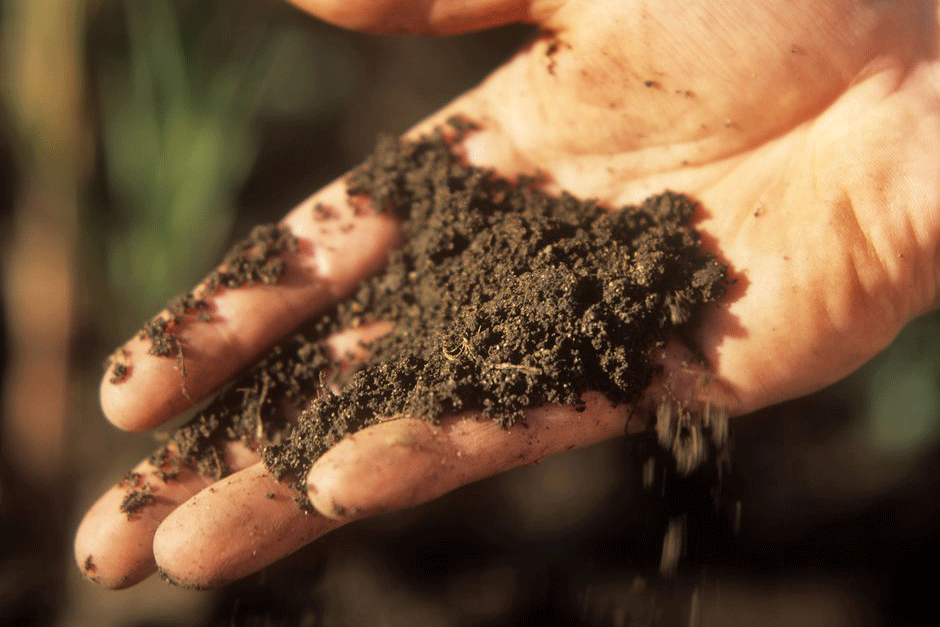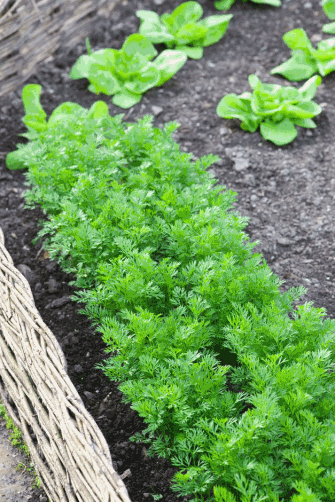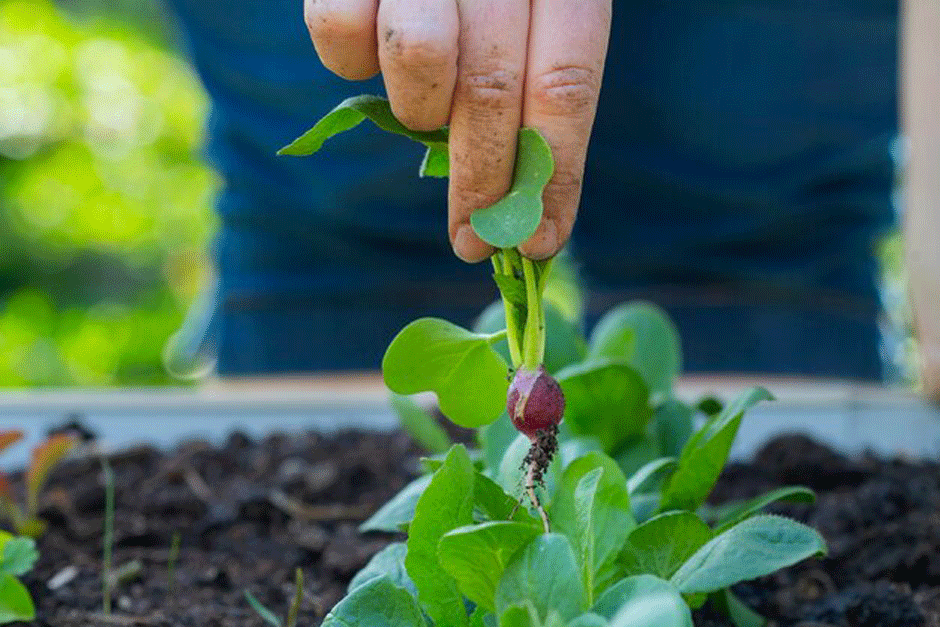Expert tips on giving veg the best start, what to sow in March and making the most of your space from Senior RHS Advisor Nikki Barker

 Whatever the nature of your soil, how do you know when conditions are right for sowing? I find that on my heavy clay soil, so long as it doesn’t stick to my boot soles, and I can roll some soil in my hands without getting frostbite, it’s ready. At this point, I’ll start preparing the ground for some of the hardier crops.
Whatever the nature of your soil, how do you know when conditions are right for sowing? I find that on my heavy clay soil, so long as it doesn’t stick to my boot soles, and I can roll some soil in my hands without getting frostbite, it’s ready. At this point, I’ll start preparing the ground for some of the hardier crops.
Chalky or sandy soils tend to drain more freely than clay, so will warm up faster in spring. Clay soils can stay cold until quite late into spring, so if you’re keen to get started and the weather is not on your side, consider covering areas of ground with fleece, cloches or re-usable plastic sheeting.
This can help to warm the soil surface and reduce the amount of water getting into it. I’ve tried this a few times with mixed results. It can help bring sowing forward by a few days, however, if it turns cold again in May, I’m not convinced it makes much difference to the eventual harvest time. For this reason, I try not to bend nature’s will too much.
Perhaps I am becoming a lazy gardener, but these days I prefer to watch the weather and wait, rather than create extra work for myself! In a cold spring, I find it simpler to start things off in pots or cell trays; including peas, onion sets and brassicas.
These are then transplanted outside when the sun is shining and the soil has warmed up on its own. This also means the plants are a bit bigger when they go in, so are usually robust enough to stand up to a bit of nibbling by slugs and snails!
What to sow now
Some seeds can be sown straight into shallow drills in the ground (known as direct sowing). Examples include beetroot, carrots, spinach and parsnips.
I find that even if I sow these too soon, when the soil is still too cold, or if the weather turns cooler after sowing, they’ll usually still germinate when conditions are right as temperatures rise – so don’t expect seedlings to always pop up straight away.
Often the second sowing comes up at the same time as the first – which just goes to show that sometimes, trying to get ahead of the game doesn’t achieve a great deal.
March is a good time to start off these crops that can go straight into the ground. Carrots, spinach, beetroot, salad leaves, spring onions, radishes, broad beans and peas are all good to go.
With so many cultivars to choose from, both old and new, the possibilities are almost endless. It’s fun experimenting with what works for you. I especially like Beetroot ‘Cylindrica’ – beetroot don’t have to be round, and this shape means they all cook at roughly the same speed!
Sowing spinach now will give you lots of fresh leaves in just a few weeks’ time. The later you sow this, the more likely it is to bolt as we head into warmer weather.
Potatoes can go into the ground this month so long as it isn’t too wet. I have left it until as late as mid-April in the past, so don’t worry if you can’t get them in – you will just be harvesting a bit later. I tend to leave planting mine until towards the end of the month – this means that even if the new growth is nipped by a late frost in May, they will generally recover well.
Successional sowing and thinning out
 Beetroot germinates at quite low temperatures, so is a great one to start off if the weather is still cold early in the month. Their seeds are large enough to sow quite spaced out in the row, which means less thinning out.
Beetroot germinates at quite low temperatures, so is a great one to start off if the weather is still cold early in the month. Their seeds are large enough to sow quite spaced out in the row, which means less thinning out.
Smaller seeds like carrots and lettuce will need thinning out as they start to grow. To do this, remove the smallest, weakest seedlings first, then as the rest get larger, keep thinning until the spacing is right for the remaining plants to mature.
Successional sowing means that I harvest little and often. That way I don’t get tired of eating anything too frequently. Because I live in the south of England, I sow spinach every couple of weeks through March and April (in northern regions you can carry on sowing through May), but then wait until late summer when things cool down to sow more.
Even if there are occasional gluts, spinach is a great filler in early salads (while you are waiting on lettuce) – and even a mountain of spinach only cooks down to a few mouthfuls.
After many years of growing vegetables, I am finally getting the hang of growing what I actually like to eat. This may sound weird, but you don’t have to grow runner beans or cabbages! Successional sowing of dwarf French beans means I enjoy a long harvest period with no ‘glut’, and just two or three cabbages a year is plenty for me.

Pick of the crop

Look for the RHS Award of Garden Merit (AGM) when buying vegetable seed or small plants. You can also download the RHS lists of recommended cultivars.
You may also be interested in...
About the author – Nikki Barker
I am a Senior Horticultural advisor at the RHS, answering many varied questions from members, and giving talks and demonstrations here at Wisley. I love growing vegetables on my allotment, and as a ‘lazy’ gardener, I mostly use the no-dig method!

